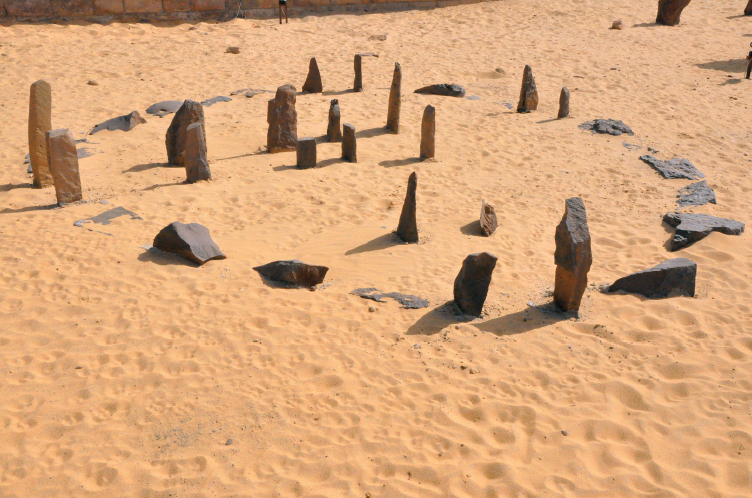How did growing social and gender hierarchies and expanding networks of trade increase the complexity of human society in the Neolithic period?
TTHE DIVISION OF LABOR THAT PLOW AGRICULTURE ALLOWED LED TO THE creation of social hierarchies, the divisions between rich and poor, elites and common people that have been a central feature of human society since the Neolithic era. Plow agriculture also strengthened differentiation based on gender, with men becoming more associated with the world beyond the household and women with the domestic realm. Social hierarchies were reinforced over generations as children inherited goods and status from their parents. People increasingly communicated ideas within local and regional networks of exchange, just as they traded foodstuffs, tools, and other products.

Stone Circle at Nabta Playa, Egypt, ca. 4800 B.C.E. This circle of stones, erected when the Egyptian desert received much more rainfall than it does today, may have been a type of calendar marking the summer solstice. Circular arrangements of stones or ditches were constructed in many places during the Neolithic era, and most no doubt had calendrical, astronomical, and/or religious purposes. (Courtesy of Raymond Betz)